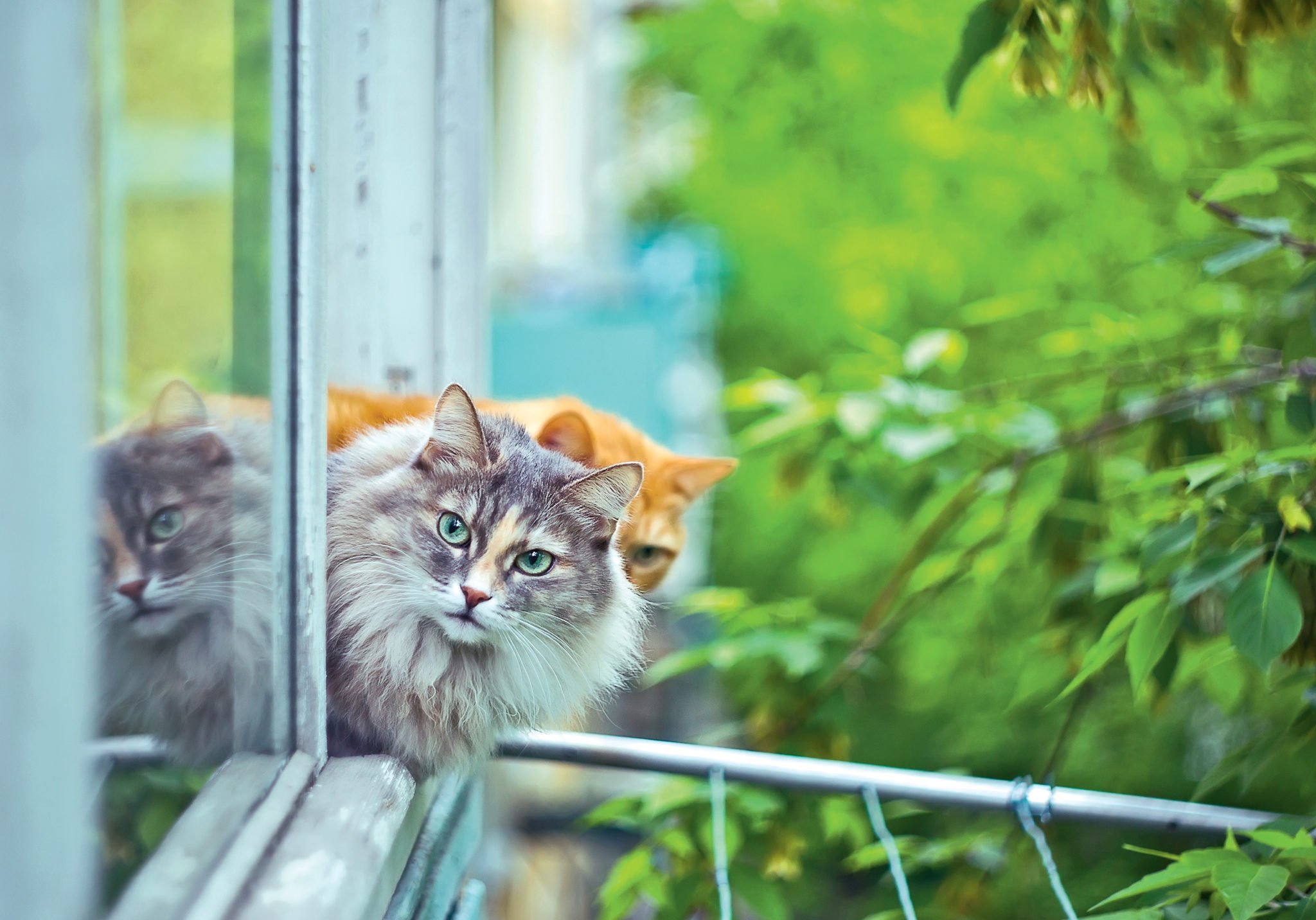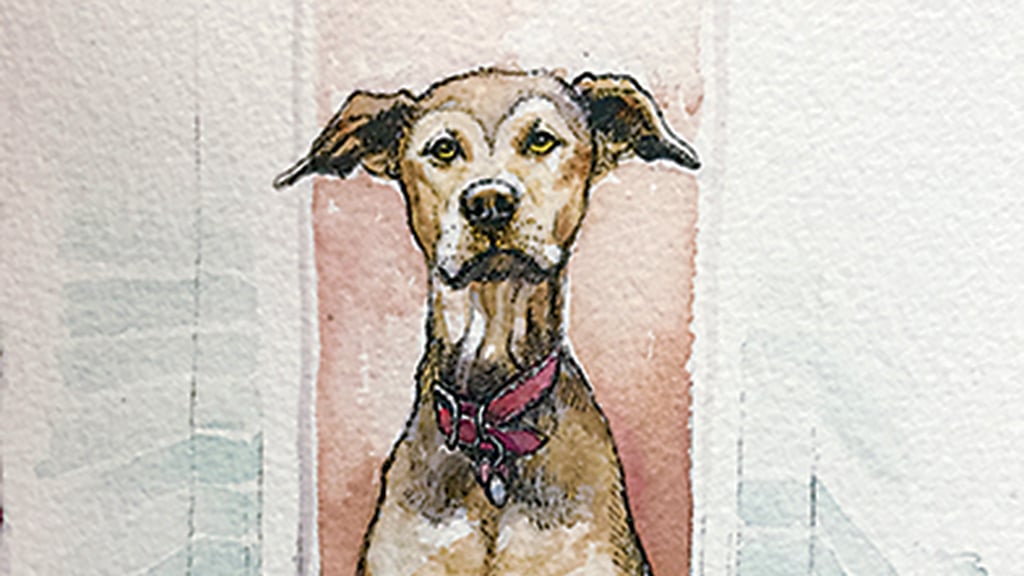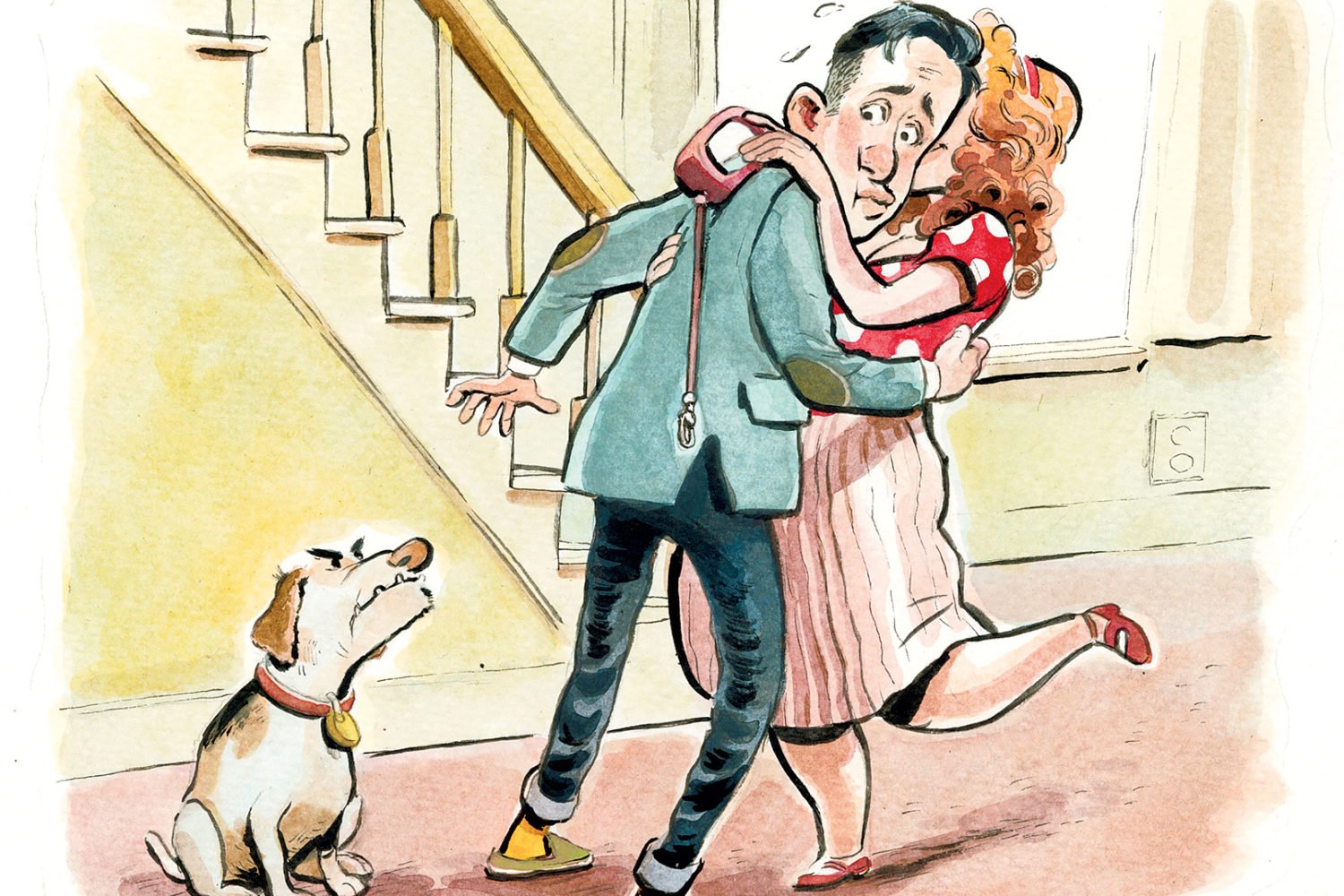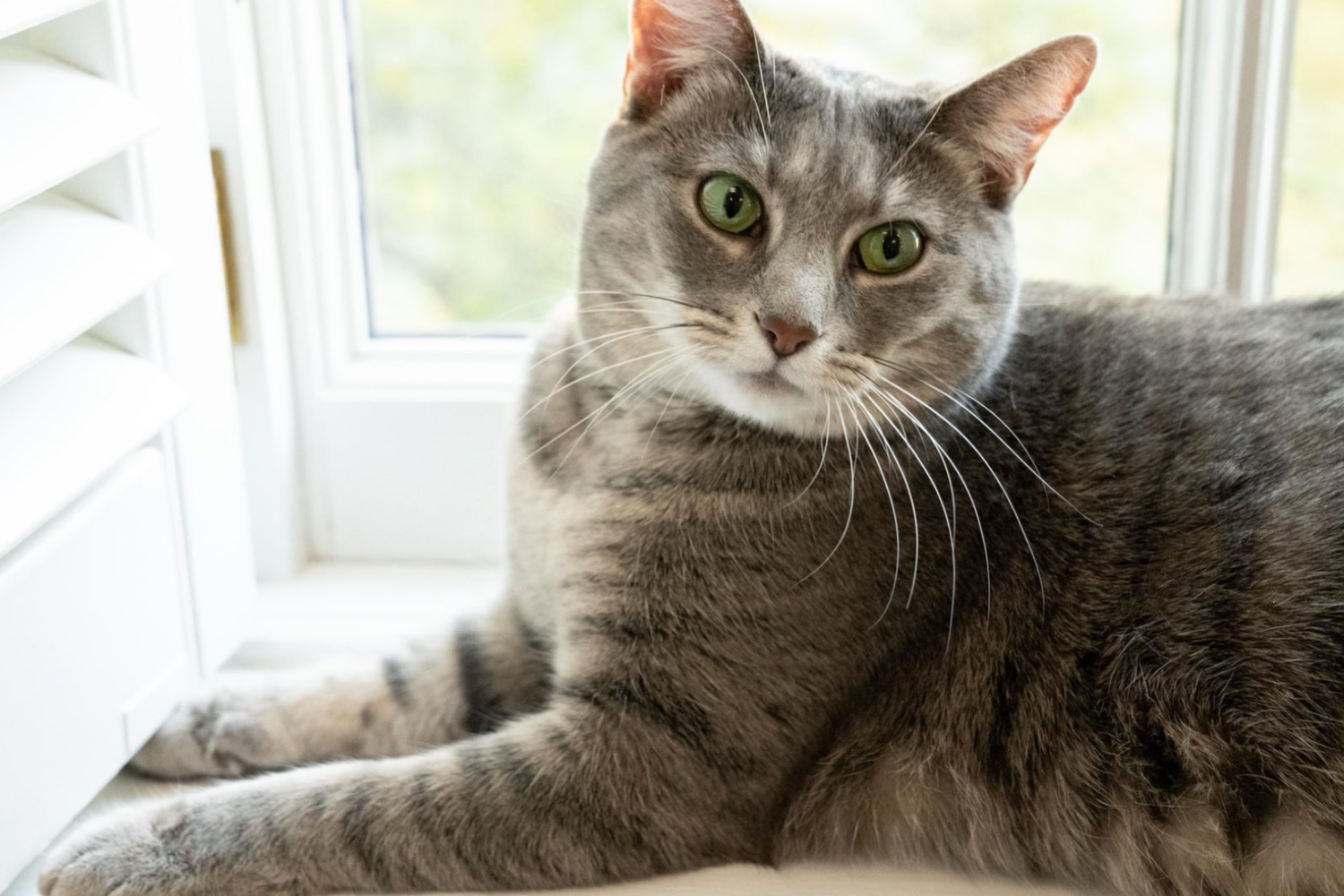It’s the time of year when many city house cats wage war against their captivity. Maybe yours takes airborne swipes at the front doorknob, trying to unlatch that sweet portal to freedom. Or perhaps your cat plots in the corner, waiting for the perfect chance to slip out as you step onto the porch.
What are they running from? Us, partly. Cats “love being stimulated mentally and emotionally,” says Ellen Carozza, a veterinary technician at NOVA Cat Clinic. “So when their home life is not enriched, of course the outdoor environment looks so much more inviting.”
I learned the hard way just how terrible an idea it can be to let the cat out—and my chubby, sedentary Olive isn’t even the escape-artist type. She didn’t sneak out. I let her into our upper Northwest yard one evening last spring, thinking it would be a nice treat before bedtime. Olive was outside only a few minutes when I heard the hissing. On my back steps, the biggest raccoon I’d ever seen was straddling her. I screamed, the raccoon turned, and Olive used her attacker’s momentary distraction to twist free and vault into the house.
Thousands of dollars in vet bills, two months in a cast for a torn Achilles tendon, and a booster rabies shot later, she was healed.
Talk about an expensive reminder of the reasons many local rescue groups won’t allow adoptions by people who plan to let the cat roam outdoors. DC’s Humane Rescue Alliance flat-out requires adopters to commit to keeping cats in-side. At Northern Virginia’s Homeward Trails, the policy is that adopted cats must remain in the house unless they started as outdoor cats and “have failed at in-door living,” with problems such as destroying furniture or not using the litter box, says the group’s executive director, Sue Bell.
Outdoor cats lose out in several ways. Their life spans are often cut short by coyotes and foxes (as some people don’t know, we have them in Washington) or humans who happen to be driving cars (as pretty much everyone knows, we have lots of them, too). Or they may come into contact with other cats that have contagious diseases, such as the potentially fatal feline leukemia virus. Then there’s the matter of fleas, which, in addition to biting, can spread tapeworms.
So what happens when families adopt—or are adopted by—cats accustomed to being outside? Lois Baron, an Arlington resident who both fosters and has cats of her own, has had several that have slipped outdoors despite her best efforts. It hasn’t been pretty: She found one cat dead under a bench in her back yard. Another that escapes regularly has a “breakaway” collar so she doesn’t get caught on a fence or a branch and choke. This one has lost so many collars that Baron imagines there’s a bush somewhere full of them.
For Alexis Battista, who grew up on a farm, barn cats were useful to keep the mouse population in check. But today the Vienna resident keeps her cat inside. A previous pet got out once and was gone for five weeks. The family assumed the worst, but a neighbor found the animal in a storm drain. “When we got her back, she weighed five pounds,” says Battista. “I don’t know that I ever saw her trying to get outside again.”
Outdoor cats also harm birds—another reason why the Humane Rescue Alliance eagerly offers advice for keeping cats entertained inside, including “hiding” their food under newspapers, switching out toys every few months, and providing a window for them to sit in. Carozza, of NOVA Cat Clinic, takes it further. Four times a week, she straps her cat into a pet stroller for a three-mile walk. As a result, she says, “I don’t have problems with him wanting to escape.”
This article appears in the July 2019 issue of Washingtonian.


















